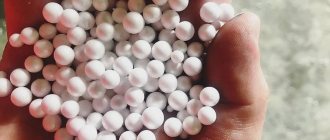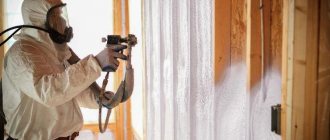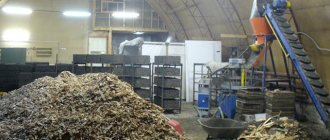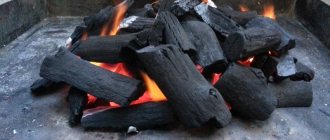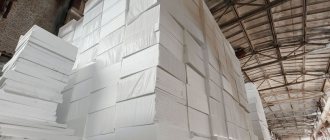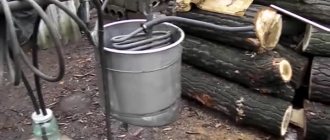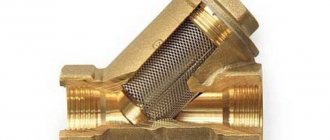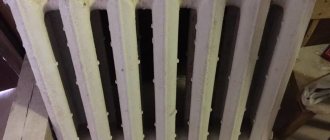In construction, work is often carried out related to the insulation of structures, where polystyrene foam is used as the most inexpensive material. Accordingly, the density of such insulation is low, which, when cutting it, leads to the formation of a lot of debris, which is quite difficult to collect, since pieces of foam plastic tend to become electrified and stick to everything that comes their way. To facilitate the process of cutting insulating material, there are many methods and devices that help cut foam without crumbs.
Cut out foam parts with straight cuts
How to cut foam plastic so that it does not crumble
Expanded polystyrene is a universal material that is used for thermal and sound insulation of buildings under shock and noise loads. When carrying out repair work related to thermal insulation or redevelopment, it is necessary to cut out large sheets of insulation. In this regard, the question arises of how to cut foam plastic so that the line is even.
Tools
Let's look at equipment that is used for cutting foam at home. These include:
- knife
- hacksaw for metal
- fine-toothed wood saw
- Bulgarian
- soldering iron
- nichrome wire.
Before you start cutting, you need to mark the workpiece with a simple sharpened pencil. If you use a hacksaw or jigsaw as a cutting tool for foam plastic, you should not make quick movements. This is due to the good thermal insulating properties of the material, when when friction occurs, heat does not dissipate and it heats up, which complicates the process. Use a soldering iron if you need to quickly cut the workpiece. To do this, its end needs to be flattened with a hammer and a special part is secured, for the manufacture of which you need to take a metal cap of a fountain pen and a blade. After the device has warmed up, start cutting sheets.
Using a grinder, cut only very thin foam. It is unlikely that you will be able to achieve a high-quality cut; the result will be similar to when working with a jigsaw. In addition, with this method of processing the material there will be a lot of debris and noise.
Choosing a suitable knife
To cut the foam, you can use an ordinary knife, which should be well sharpened and preheated. The stationery version is suitable for cutting soft material; it has a fairly flexible blade and is not recommended for processing slabs of considerable thickness, since it is difficult to obtain an even vertical cut. The advantages will be a small amount of waste, availability and low cost of the tool. Remember that the thinner the sheet, the smoother the cut will be; the optimal thickness should be no more than 5 cm.
The most optimal cutting method
This method can be used if you have a basic understanding of electrical engineering; to make the device you will need to prepare:
- wire
- transformer
- spring.
The table is placed at an angle (20-60˚), and a wire is stretched across it, one end of which is rigidly fixed, and a spring is used to secure the other. The wires of a transformer connected to the electrical network are connected to them. Current is supplied and the workpiece is placed on the table. Sheets are cut as a result of sliding under the influence of their own weight.
You can pass current from the power transformer of an old TV. Another option is to include a variable resistance (rheostat) in the electrical circuit. The current strength must be controlled so that strong heating does not occur, which will result in melting of the foam and the appearance of sagging lines along the edges.
An attractive side of this method is the ability to cut fragments both in a straight line and along kinks and convolutions, which makes the process universal
It is important to remember that the wire should not be very hot. It will be enough if she just turns slightly red, otherwise the cut will be too wide
You should select a strong spring, this will make it possible to adjust the length
You should select a strong spring, this will make it possible to adjust the length.
Features of working with large sheets
It is possible to cut foam boards with your own hands using simple but effective equipment, such as steel wire with a diameter of 0.5 mm and wooden handles attached to the ends. First you need to mark the block on both sides and start cutting quickly. The thread heats up and melts the material, resulting in a hard, smooth and melted surface. To decide what is best for cutting expanded polystyrene (foam), you need to evaluate all the advantages and disadvantages of the listed methods and select a tool based on the characteristics of such cutting.
Using a hand saw
Cutting a foam board with a thickness greater than 50 mm using a knife will be very difficult and ineffective. If you use an electric jigsaw, there will be a lot of debris, and the cut line will not be smooth. Therefore, the best option for cutting polystyrene foam up to 10 cm thick at home is with a hand saw.
To carry out the work, it is recommended to purchase a wood saw with a length that will allow you to cut material 50-100 mm thick.
Making polystyrene foam at home
Often, polystyrene foam is used not only as insulation, for insulating walls, but also during the manufacture of various packaging. Quite often, various dishes are made from it. Therefore, foam plastic is one of the most popular materials all over the world.
How to make polystyrene foam at home? Pressure and steam are used to produce it. Therefore, in the case of home-made, self-made products, it is better to use a more open area than an apartment (garage, country house). The room in which polystyrene foam is produced must be well ventilated, because during its production and drying, a substance called formaldehyde begins to be actively released.
To produce polystyrene foam, you need to purchase special equipment. However, if you really want, you can make such equipment yourself, using a homemade method. But it should be noted that to produce high-quality polystyrene foam, it is necessary to use the necessary equipment.
On a note! Special polystyrene granules are used as raw materials for the production of polystyrene foam. These granules, when actively exposed to steam obtained from ordinary water, begin to actively foam.
The process of making polystyrene foam is simple and does not require large financial investments. However, to make it you need to have a minimum set of knowledge and skills. First of all, at the initial stage of production, you need to foam the granules. These granules are also called beads. To do this, they are placed in a special bunker, into which steam begins to actively flow under pressure. During this treatment with water steam, the size of the granules begins to increase by about 25-50 times.
The next step is to dry these polystyrene granules. To speed up the drying process, you can use heated, warm air. After treating the granules with steam, they must rest, and the space in which they are located must be filled with air - this is an important condition for making polystyrene foam at home. As a rule, this drying procedure takes at least 4 hours.
At the last, third, final stage of production, foam granules must be placed in special molds. This stage is called molding. After being placed in molds, the granules, due to constant exposure to steam, begin to stick together, after which a whole tile or block is formed. After making a whole block, the product also needs to be given a little time to rest, after which it can be cut or transported.
Cutting with a stationery knife
When carrying out construction work that involves insulating walls or various floors of a building, cutting polymer materials with thermal cutters is not always justified. As a rule, structures of this type have a strict geometric shape, so in this case, an ordinary stationery knife can be used to cut polystyrene.
The main condition in the case of using a stationery knife for cutting this polymer material is that its blade is as thin and sharp as possible, and its length is greater than the thickness of the material being cut. You need to cut polystyrene on a solid, stationary base. For marking, you can use slats or rulers.
Nichrome wire cutting
To effectively cut polymer materials, you can also make a special cutter, the main element of which will be nichrome wire. The cutting process itself is performed using nichrome wire heated to 120 degrees Celsius, which rather than cuts, melts the material. Thanks to the use of this method, even cuts are obtained, and polystyrene does not crumble or break during such processing.
These cutters are made from nichrome thread through which an electric current passes. Making such cutters with nichrome thread is quite simple. Unlike machines, such a cutter is a compact, portable device. However, its disadvantage is that it is impossible to independently control the heating of the nichrome thread and select the operating temperature.
Advantages and disadvantages of penoplex
This insulation is in quite significant demand on the market due to a number of the following positive qualities:
- High degree of thermal insulation. Penoplex is excellent for both internal and external insulation of buildings. With the correct thickness of the sheets, taking into account the area of residence, the material allows you to retain an impressive amount of heat inside the home and significantly save on heating in the cold season.
- High sound insulation characteristics. An extremely useful quality, which is not superfluous for modern apartments, which in many cases have almost no sound insulation, as well as for private houses, especially when they are located near roads with a large flow of passing vehicles. In the first case, with its help it will be possible to protect yourself from noisy neighbors, and they, in turn, should not be disturbed, for example, by loud music playing if there is a desire to listen to it.
- Environmental friendliness. The insulation is NOT dangerous for people, since it does not emit substances harmful to health. Its production is carried out in accordance with all European standards and norms.
- Light weight. Thanks to this, it is convenient to transport and move the material after purchase, and it is also much easier to carry out installation with its participation. The only drawback of the light weight of the insulation is that even a weak gust of wind when working outdoors can blow the sheets in different directions. Taking into account this feature, it is better to attach penoplex to the wall outside the house if it is completely absent.
- Resistance to the negative effects of fungi, mold and other microorganisms. Even with a long period of outdoor use, it does not lose its positive qualities, thanks to which it can effectively serve for many years.
In addition to the significant advantages of Penoplex, there are also some inherent disadvantages. One of the main ones is that most technical fluids can cause irreparable damage to insulation. Taking this into account, it is necessary to exclude direct contact of the material with solvents, acetone, gasoline and other similar mixtures. Even their pairs can lead to a violation of the integrity of the penoplex, which will certainly arise after some time.
How to distinguish
You can distinguish polystyrene foam from penoplex by appearance. The first material is produced in the form of a lightweight slab, on the surface of which foam balls filled with oxygen are visible. The sheets of the second raw material are dense in structure, somewhat similar to polymerized construction foam.
Color is a noticeable difference between penoplex and expanded polystyrene. On the cut of the slab of the first material, orange or yellowish tones are visible. Insulation made from foam balls is always produced in a snow-white palette.
White and colored insulationSource zen.yandex.ru
Manufacturers produce the material in sheets, the thickness of which varies from 20 to 100 mm. Given the same dimensions, the foam block will be 50% lighter than the extruder model. Penoplex is afraid of ultraviolet radiation, so the material is protected with shrink film. Polystyrene foam is sold in regular plastic packaging.
Knowing the differences between penoplex and expanded polystyrene, it is easy to choose insulation yourself. Both materials can be cut with a construction knife. When working with the first, the user presses lightly on the blade and easily divides the sheet. The second raw material is susceptible to crumbling, so with careless movements the block breaks and crumbles into small balls.
Particles of cheap materialSource superdom.ua
What are foam boards
Expanded polystyrene, this is the second name for foam, consists of air bubbles enclosed in a plastic shell. They are glued together and form a mass with low density. Air in each slab of material is about 95%. That is why the material retains sound and heat well. But at the same time it crumbles, breaks and bends when mechanically damaged, cannot withstand high temperatures, and is easily flammable.
Despite this, expanded polystyrene is widely used as an insulator. In addition to good insulating properties, it is easy to install. Light weight with significant dimensions facilitates installation and does not load the building structure. The slabs are not afraid of high humidity; insects and microorganisms do not settle in them. However, almost all technical liquids, including acids, alkalis, solvents and some types of adhesives destroy the structure of expanded polystyrene.
Where can I use it?
A universal material that can be used to insulate any surface:
- Roofs and walls.
- Floor and plinth.
- Industrial buildings and residential buildings.
This is one of the simplest methods of insulation, which is why many people use foam plastic. The house will become comfortable and warm, and the insulation itself is very reliable. The installation work itself and the material are inexpensive, so if you wish, you can hire a team of workers for these purposes.
To insulate walls, foam sheets are more often used, and crumbs or balls are used for the roof. The floor and base are often insulated with extruded polystyrene foam.
Process nuances
The following tips will help you get a smoother and more accurate cut:
- Be sure to pre-mark the material. Some craftsmen recommend making a shallow cut with a blade along the line of the future cut to make the work easier;
- The cutting tool should be preheated;
- You can rub the blade of a knife or hacksaw with a white wax candle or liquid lubricant;
- It is advisable to sharpen the blade every 2-3 meters of the cut;
- You should act smoothly and evenly, without sudden movements or pressure;
- The foam sheet should be securely placed on a flat surface or secured so that the cut part does not hang in the air and does not break off. Do not cut polystyrene foam by weight or in a vertical position;
- After making the cut, the edges of the material are rubbed with a piece of foam plastic.
Methods for cutting foam plastic
Expanded polystyrene can be cut using a wallpaper knife. This tool will not only cost less, but will also be silent in operation, and cutting will be carried out in a short time. The advantage of this method is the minimal amount of waste.
Before you start cutting, you need to check how sharp the knife is. This characteristic of the tool will allow you to perform work faster and with better quality.
Foam with a greater thickness is more difficult to cut, and you should not use a knife for cutting if the thickness of the material exceeds 5 cm, as it will be ineffective.
Before you start cutting, you should purchase a long saw: it will allow you to cut sheets whose thickness does not exceed 10 cm.
It is preferable to cut polystyrene foam with a hand saw designed for woodworking. If you intend to use a regular knife for the process, you will need to sharpen it before starting. Then the blade should be heated, only after that you can start cutting. In this case, cutting the material will be accompanied by melting of the edge. The cutting line will be smooth, the material will not crumble, and debris will be generated in minimal quantities.
You can also cut polystyrene foam with your own hands in an unusual way, which involves the use of hot nichrome wire. However, before you begin, you will have to do a little work on creating the tool. It can be made from wire, spring and transformer. The table must be installed at an angle of 60°. A wire has to be pulled across it; on one side, its end must be strengthened as rigidly as possible, and on the other, the end must be strengthened through a spring. To the ends of the wire you need to connect the wires of the transformer, which should be powered from the mains. After this, it is necessary to apply current and lay a sheet of heat insulator on the surface on top of the wire. Since the table is inclined, the thermal insulation sheet will move by sliding, succumbing to the influence of its weight.
To cut, you need to wait until the wire is almost red hot, but you should not let it get too hot. If this is allowed, the cut will become too wide. As the nichrome wire heats up, it will become longer. This indicates the need to use a strong spring in the design. This will allow you to adjust the length.
Cutting can be done with a grinder equipped with a metal disc. The thinnest disc should be used. This method cannot be called the most comfortable. In addition, the tool creates a lot of noise and a lot of debris will be generated.
Foam plastic lends itself well to processing with a soldering iron. The use of this tool will allow you to complete the work in the shortest possible time. The end of the soldering iron must be flattened with a hammer. After this, you need to put a special part on it, made of a blade and a steel cap taken from a fountain pen. The blade needs to be installed at the end. Then the soldering iron should be heated and you can start cutting the blades.
In addition to the fact that even sheets can be made from foam plastic, they can be shaped cutting, giving the workpieces a variety of shapes.
If you create shaped elements from foam plastic, the material can be used not only as insulation, but also as decor for any room.
Polystyrene foam is not afraid of staining, which is why its surface can be coated with paint after cutting. Each of the above cutting methods has its own advantages, but you should prefer the one that will be less difficult for you.
The use of penoplex in construction work requires taking into account the features of installation of the material using different adhesive compositions. They must have high elasticity. Working with penoplex often comes down to gluing different elements, so this issue is paramount
In addition, it is important to decide how and with what to paint the penoplex. This is due to the fact that various crafts are often made from such material, for example, boats
Glue selection
To attach tiles to the ceiling, several types of glue are used:
- Universal compositions. Elitance glue is suitable for working with wood, plaster, and concrete. It is convenient because it forms an elastic seam, however, the composition takes a long time to dry. Titan glue is more common; it has a viscous consistency and sets quickly. The composition of Master glue is similar, but the strong smell and longer drying time are the main disadvantages. The advantage over Titan is its affordable price. “Moment” is an expensive but high-quality glue. It grips quickly, but the consumption is higher than its analogues. The packaging is in the form of a syringe, so it requires a gun. Universal adhesives also include “Dragon”, “Power”, “Anserglob”.
- Liquid Nails. This type of glue is often used by professionals. Liquid nails are thick, so they are placed in a thick layer on uneven areas. For tiles, choose a white adhesive, without solvents, especially when working with thin materials. It is also used to decorate seams. The most famous brands are “Moment Montage” and “Tytan”. For application you will need a construction syringe.
- Polyvinyl acetate glue. PVA and Bustilat practically do not give off an unpleasant odor, but they take longer to set, and the consumption can be quite large, since the glue is applied both to the tile itself and to the ceiling.
- Finishing acrylic putty. This is a non-standard, but effective use of a product that has the desired viscosity. When glued to putty, the seams turn out white and no gaps are formed. The surface can be painted. To work you will need a spatula.
We use automated systems
The delights of architectural design also require insulation. In order to preserve their expressiveness, it becomes necessary to manufacture complex elements. How to cut out such details? A more affordable option is to process the insulation by milling. But milling of foam plastic is not carried out for the reason that the cutter, when rotating, tears out quite large pieces of material.
Dense polystyrene foam has higher mechanical strength and is easily milled. Anything can be made from it: a letter, a number, a graphic element of any complexity. Even a hedgehog. It is recommended to cut penoplex at high angular speeds with an average linear feed. To install the manufactured fragments on the façade, ceresite is used.
Laser cutting of foam is the most advanced technology, combining a hot cutting tool and the precision of an automated system. Laser cutting of foam plastic allows us to produce parts of any complexity with the highest precision with a minimum level of waste. Laser cutting foam produces a completely smooth cutting surface using a hot beam of directed light moving at high speed. There are no restrictions on the thickness of the material and the complexity of the element.
The choice of cutting equipment used for foam boards and extruded polystyrene foam must be conscious. Meet technological requirements for finished products and be economically feasible.
Classification of machines
The design features of the units do not differ from each other. In each of them, cutting occurs due to a hot wire fixed in a certain position. Some of the modifications have up to six adjustable strings, this allows for more massive work. Machines for cutting foam plastic can be equipped with a rotary table with a permanently fixed cutting element.
Foam cutting machine options
The devices are divided into several categories:
- equipment with software control, allowing you to cut out figures of increased complexity;
- portable cutting elements;
- transverse or horizontal types of cutting.
The most complex machines in design allow you to work on several planes of a product at once. The performance of foam cutting machines is designed for industrial purposes; some models can process over 10 meters in one go.
Tool No. 1: shoe cutting tool
Sample of a shoemaker's knife
A shoe knife is sharp enough that its blade can pass through plastic bubbles without catching them.
But there are still some notes on its operation:
- It is possible to cut only those sheets whose thickness does not exceed 40 mm;
- The blade dulls quite quickly, which is why it requires sharpening after passing approximately every 200 cm of foam. But this only matters for large volumes of work;
Always keep a sharpening stone handy when using a shoe knife.
- As the blade passes through the foam, it rubs against the plastic bubbles with a terrible sound. So be prepared.
Protect your hearing and mental health
Area measurement
To calculate the required amount of material before gluing the ceiling tiles, you need to determine the area to be decorated. Remembering the school mathematics course, the ceiling area can be determined by multiplying the length by the width. If the room is of a non-standard shape, take a sheet of paper and diagram the ceiling on it. We divide it into rectangles and calculate their area, then calculate the area of the remaining pieces.
To calculate the amount of materials, you need to find out the area of one tile and divide the total area of the ceiling by this figure. If the number you get is, for example, 80, this does not mean that this is the exact number of tiles you need to purchase. Increase the number by about 10%.
How and with what to cut foam plastic with a guarantee of dimensional accuracy?
In addition, they are used to make shaped cuts. But you need to take into account that the length of the blades of many tools is no more than 5 cm. Also, when working with hot tools, you should be careful not to get melted foam on your clothes or skin. It will not be possible to remove it from the skin instantly, which means there will be a severe burn.
6. Another good device that can be used to cut foam boards is a special machine. You can buy it or make it yourself. Cutting is fast, silent and effortless, and material of any thickness can be cut (depending on the capabilities of the machine). The amount of waste is minimal, and the cut is absolutely even and smooth. Another advantage of this method is that, thanks to the hot nichrome wire, the cut cells are melted back together. As a result, the thermal insulation characteristics of the foam do not deteriorate.
Tips and tricks and how to make a simple machine with your own hands
Before cutting the foam, you need to mark with a sharpened pencil. If possible, you need to cut the slab in the direction away from you. When sawing foam plastic using the heating method (machine with wire, electric knife), dangerous black smoke is released, which causes significant harm to humans. Therefore, cutting it using these methods should only be done in a well-ventilated area or in the open air.
In order to make a simple machine, you will need a surface with an inclination (20-60°). A nichrome wire with the required cutting height is stretched across it. One end of it is firmly fixed, and the other is connected to the spring. Then the wires from the power supply are connected. The current strength must be controlled so that the wire does not overheat too much, so a rheostat is additionally connected. The temperature should not exceed +100°C. After everything is ready and the thread is heated, the foam is cut. To do this, you just need to lay the plate down, and it will begin to roll off on its own (if the surface is smooth enough) or it will be pulled evenly through the wire. If you do this too slowly, the cut will be wide, since during this time a lot of foam will have time to melt. If you do it quickly, there is a risk of breaking the thread.
Ready-made machines for cutting polystyrene foam have more capabilities. With their help, 3D figures are made. Depending on the configuration, they can have from one to six strings. They are controlled either by the operator manually or through a computer program
Some are compact in size, making them easy to transport, which is extremely important for builders. The cost of machines for cutting polystyrene foam starts from 40,000 rubles
There are also models with laser - such devices make the highest quality cuts. Laser machines are used to cut out shapes for store windows, exhibitions or any other important events.
Before choosing the best way to cut polystyrene foam, you should decide how much material needs to be processed. If cutting will be carried out only once, then you can get by with a sharp knife or hacksaw. In another case, it is better to buy an electric knife or make a machine with wire yourself or purchase a ready-made one.
- Do-it-yourself insulation of the facade with polystyrene foam: technology, photos, videos
To reduce heating costs, many owners of houses and apartments are thinking about insulation. One of the possible options is to insulate the facade... - Using polystyrene foam as insulation for walls and floors, technology and tips, video
With the rise in price of coolants, the issue of saving becomes relevant. One way to reduce space heating costs is to use... - Liquid foam in cylinders: reviews, feasibility and scope of application, prices
The term “liquid foam” refers to a group of thermal insulation materials that form dense, quick-hardening foam without large cells with partially or…
This is interesting: Head for wells - study in detail
Precautionary measures
When cutting foam, protect your respiratory system and eyes to prevent dust from entering. When using thermal methods, carry out work exclusively in the open air or in well-ventilated areas: polystyrene foam emits vapors and particles that are harmful to the respiratory system.
So, choosing the right and sharpened tool, properly securing the material during work and observing some simple conditions will help you make an even and high-quality cut with a minimum amount of debris.
Temperature characteristics:
| Polystyrene | Operating temperature limits, C | Vicat softening point | Heat resistance according to Martens | Melting point C | |
| upper | lower | ||||
| PS | 65-70 | -40 | 82-105 | 76-82 | 160-175 |
| ABS | 75-85 | -60 | 99-100 | 90-104 | 165-180 |
Dielectric constant of polystyrenes:
| Polystyrene | έ at v, Hz | ||
| 50 | 103 | 106 | |
| PS | 2,65 | 2,6 | 2,6 |
The flammability index (K) is a dimensionless quantity that expresses the ratio of the amount of heat released during combustion to the amount of heat expended on igniting a sample of material. Material with index K>0.5 is flammable. For polystyrene, the K-1.4 indicator is flammable
Types of electric cutters
The electric foam cutter can be used for a variety of purposes. This will determine the type of design and overall performance characteristics of the equipment. There are three main types of homemade cutters.
The first category is used for linear cutting. The second group includes cutters that perform shaped cutting of material.
Designers use them. This type is used less frequently for home repairs. There is also a tool with a metal working plate.
Such equipment must have a step-down transformer in its circuit. It must be rated for a minimum power of 100 watts.
The secondary winding of the transformer must have a cross-section of at least 1.5 mm. It must withstand a voltage of 15 V. In this case, you can achieve high performance results.

